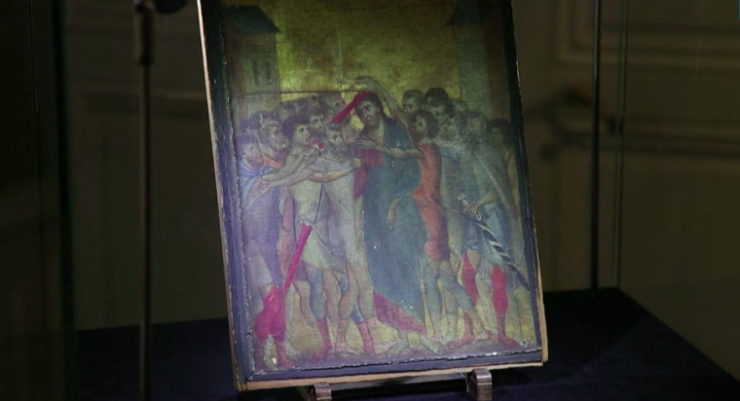
An early Renaissance work of art depicting the mocking of Christ as He made his way to be crucified was found in the kitchen of a French woman and was sold for approximately $27 million on Sunday.
The 13th century painting, called "Christ Mocked," by Florentine painter Cimabue, had hung for decades above a cooking hotplate in the open-plan kitchen of a home near Compiègne, north of Paris, The Guardian reported Sunday.
The artwork had reportedly never attracted significant attention from the woman, who is in her 90s, or her family, who thought it was an old icon from Russia.
The painting, which measures 26 centimeters by 20 centimeters, was auctioned off outside of Paris Sunday for approximately $21.7 million, which rose to nearly $27 million once fees were included.
"When a unique work of a painter as rare as Cimabue comes to market, you have to be ready for surprises," said Dominique Le Coent, heads of the Actéon auction house in Senlis.
"This is the only Cimabue that has ever come on the market."
The sale of the painting was the largest for a medieval painting and the eight highest for a medieval or old master painting.
The buyer's identity has not been revealed.
The auctioneer had suggested that the woman have the experts evaluate it, thinking initially it would sell for €300,000-€400,000 ($333,486-$444,648).
There is a reason why this teeth whitening pen is a best seller on Amazon. It is safe, gentle, convenient, painless, easy to use, and affordable for the family. 100% satisfaction guarantee or your money back! Click to learn more!
Approximately 100 other objects from the woman's home were sold for around €6,000 ($6,667) and the remaining furniture and decor were taken to a nearby dump.
To examine the small painting that sold for millions, "[a]rt experts at Turquin in Paris used infrared reflectography to confirm that the piece was part of a larger diptych from 1280, when Cimabue painted eight scenes of the passion and crucifixion of Christ. Each of the two panels in the diptych had four scenes," the Guardian reported.
"Two scenes from the same diptych, known as The Virgin and Child with Two Angels and The Flagellation of Christ, already hang in the National Gallery in London and the Frick Collection in New York."
Cimabue is also known as Cenni di Pepo and is considered one of the fathers of the Italian renaissance. It was Cimabue who taught Italian painter and architect Giotto di Bondone, known mononymously as Giotto.
Cimabue's artistic style was noteworthy in that he departed from the Byzantine style that dominated the Middle Ages era and started weaving in elements of movement and perspective that shaped much of western painting.
Only 11 works painted on wood are attributed to Cimabue, none of which have been signed.
Courtesy of The Christian Post.




